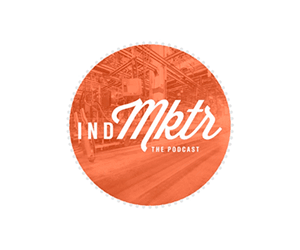Is account based marketing a way out of how uncomfortable lead generation has become? Let’s face it: We all know when we are being marked as a lead. It starts with a scenario where we are asked to provide our name, email, and perhaps another piece of information in order to read a white paper, view an infographic, or use a calculator. We ponder how soon someone will start “selling us” via a phone call or an email even though we may be nowhere close to that stage in a buying journey.
Lead generation is a world many of us live in. But most of us don’t like to be sold to. Now if a company can help us when we need help, then you are delivering value. The game changes.
That, in summary, is what account based marketing (ABM) is all about. ABM is about nurturing accounts, not just leads. It’s about the right touch points and personalization at specific points in the buyer journey. It’s about being sensitive to where people are in their buying journey.
More than that, we live in a world of technology that can link and use data points across contacts and clients in ways unheard of before now. Understanding the full spectrum of the buying decision, process, and personalities within target accounts will allow your sales and marketing teams to know which contacts need marketing assets emailed to them and which contacts require a personal phone call (or personalized gift bag sent to their office) to most efficiently close sales, and to automate most of that using the tools already available.
With account based marketing, you don’t “sell” until an account has exhibited some type of buying intent. But sorting out when a customer or prospect is ready to buy is not so simple. As we know, the industrial buying journey is elongated and non-linear, which is why account based marketing can deliver bigger wins from key accounts.
In the latest episode of the Industrial Marketer podcast, Joey and Nels look at five ways to get started with ABM.
1. Align Sales and Marketing on Goals
When marketing and sales are looking at the same data and aligned on what sales needs from marketing, it can be powerful. For example, here are five sample goals, but the tactics may differ for each goal:
- Increase pipeline and pre-sales pipeline
- Increase deal size
- Boost deal velocity
- Enhance close rates
- Expand the size and value of your existing customer base
If the marketing and sales people are in agreement on what to prioritize as you approach key accounts and ideal clients, you are off to a good start.
2. Set Goals to Focus Your Resources
Find the accounts that can drive your business. Most of us have limited resources, so pursuing the right targets is essential. Jon Miller of Demandbase summarizes this stage with the acronym FIRE:
- Fit – Are they a good fit for you, and vice versa?
- Intent – Are they showing interest in you or your competitors?
- Relationship – How do you know them, and how can you leverage that?
- Engagement – Are they spending time with you? How will you spend time with them?
Speaking of Jon Miller, the Industrial Strength Marketing podcast has an excellent episode on Account Based Experience that features him.
3. Gather Information to Enrich Your Data
This step is about building your account data foundation as much as possible. This is not just email addresses, company names, and job titles, but incorporating a record of website visits and any type of information that can be personalized. Many CRM systems have account based marketing capabilities, so dig in there to see what you can do. In many cases, you can augment your customer data with third-party data.
By connecting the dots on contact information within your technology stack (whatever CRM or marketing automation system you are using), you can link together multiple contacts and sales data points by account, understanding the best ways to contact each account and at which phase.
4. Map Account Journeys
An account journey is how the buying process works at a particular company. The industrial buying journey often involves an engineer, someone in finance, perhaps as asset manager and the C-suite. Your “map” can be the most manual step of all of these, but it can be a great help if you know who are influencers and who are decision makers.
This pays off when you engage with these stakeholders in a coordinated manner with relevant, personalized interactions across various channels (e.g., advertising, direct mail, executive outreach, events).
Of course, you can’t have a hyper personal approach with a huge number of accounts. One way to consider resource allocations is through deal size. For example: 1-to-1 for 7-figure deals, 1-to-few for 6-figure deals, and 1-to-many for 5-figure deals.
5. Create Missing Assets
By mapping the account journeys, it will be easier to identify gaps for each point of contact. Perhaps you can follow up on an intro call with a technical piece, or at another stage you can send a finance person a testimonial about ROI.
Measuring your account progress will also help identify opportunities. Traditional lead generation focuses on quantity — number of leads, event attendees, or impressions. Account based marketing metrics should focus on quality. Did the right people attend the event? Did they engage once they were there? What assets can you create to leverage those relationships?
Account Based Marketing Helps You Find the Intersection of Offer and Intent
A few deals can go a long way for many small manufacturers. That alone is an argument for pursuing account based marketing. You can get started with a pilot project. Pick an area with a couple of key accounts to follow our five steps. You can start with some targeted advertising and learn as you go.
If a buyer is not showing interest, don’t go after them for a sales meeting. Prospects will eventually form an opinion about you and your products. Account based marketing helps you reach out at the right time.
Listen to the Podcast for More on Account Based Marketing
For more insights into how to make the shift from lead generation to account based marketing, tune into Episode 22 of the Industrial Marketer podcast.
Subscribe to the Industrial Marketer Podcast
The Industrial Marketer podcast comes out twice a month. To subscribe, visit our Buzzsprout show page and select your podcast platform of choice.
And if you have any ideas for topics you’d like us to cover on the podcast — or here on the Industrial Marketer website — send us a message on Facebook or Twitter and let us know!




